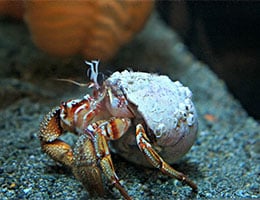 The individual who resides in a hermitage is called a hermit . A hermitage, on the other hand, is a sanctuary that is usually small and unpopulated. By extension, someone who lives away from society is called a hermit.
The individual who resides in a hermitage is called a hermit . A hermitage, on the other hand, is a sanctuary that is usually small and unpopulated. By extension, someone who lives away from society is called a hermit.
For example: “When his wife died, he decided to move to the middle of the countryside and became a hermit,” “My uncle is a hermit who lives in the mountains surrounded by animals,” “Don't be a hermit and come with me to the party.” !” .
A hermit, in short, is someone who chooses to live in solitude , avoiding or limiting contact with other people. Hermits have few social ties and are self-sufficient .
In the field of the Christian religion , hermits are individuals who aspire to optimize their relationship with God , for which they move away from the urban environment and opt for silence, penance and asceticism. This type of behavior and values allows them, according to their vision, to get closer to divinity.
On a historical level, hermits or hermits forged a trend or way of life at the end of the 3rd century . These religious people moved away from the cities to settle in isolated and solitary places in search of spiritual perfection. San Onofre , San Jerónimo and San Millán were some recognized hermits.
Buddhism , Hinduism , and Sufism also featured hermits who chose to renounce worldly pleasures to indulge in distraction-free contemplation and meditation .
In the tarot , The Hermit is a card that represents self-knowledge and introspection. His figure is an old man who has a lantern in one hand and a cane in the other.
The hermit crab , finally, is a crustacean that uses the shells of dead snails to protect its abdomen. These crabs and snails are therefore linked by a relationship of thanatocresia .
The name of the superfamily to which the hermit crab belongs is Paguroidea , and they are decapod crustaceans, meaning they have ten legs. They are also known as paguros and their abdomen is less rigid than that of other types of crabs.
 It should be noted that not many animals maintain a thanatochresis relationship. Worldwide, there are approximately five hundred species of hermit crab; Most of them are aquatic, although there are also some terrestrial. Regarding its anatomy, only the frontal region is protected by an exoskeleton, and that is why it is forced to seek refuge in foreign shells.
It should be noted that not many animals maintain a thanatochresis relationship. Worldwide, there are approximately five hundred species of hermit crab; Most of them are aquatic, although there are also some terrestrial. Regarding its anatomy, only the frontal region is protected by an exoskeleton, and that is why it is forced to seek refuge in foreign shells.
In order for the hermit crab to be able to occupy a shell without problem, its abdomen has an ideal degree of rotation. Likewise, its pincers and legs are prepared to prevent the entry of other organisms. Throughout the crab's growth process, it needs to change its shell on more than one occasion.
The hermit crab's move is worthy of admiration. First, he begins by carefully inspecting the empty shells he finds, using his tweezers; Only when he finds one that he considers suitable for his needs does he abandon the current one and move on to the new one as soon as possible, since every second he remains unprotected puts his life at risk .
Since for the hermit crab finding an empty shell to protect its body is something absolutely necessary and not a matter of preferences or tastes that it can afford to avoid, fights between two who have their eye on it are not uncommon. Regarding its diet , this crustacean is a scavenger, although it also usually includes plants, smaller crustaceans, worms, mussels and aquatic snails in its diet.
